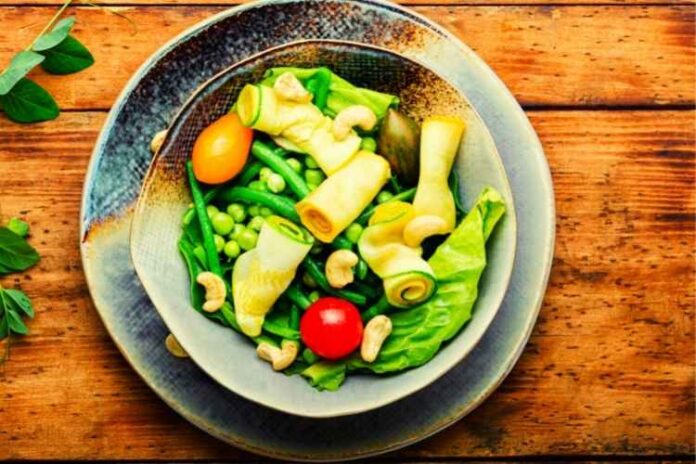The vegan diet is increasingly popular in the contemporary world. More and more people are becoming vegans for various reasons such as ethical, health, and environmental. Practicing this diet right is associated with multiple health benefits, including proper control over your blood sugar and a trimmer waistline. This diet, exclusively based on plant products, can quickly increase your chances of suffering from nutrient deficiencies. It is advisable to research vegan recipes thoroughly and gain adequate knowledge before embarking on this journey.
What Is a Vegan Diet?
Veganism refers to a nutritional lifestyle in which an individual gets rid of all forms of animal cruelty and exploitation. It may be due to food, clothing, and other relevant reasons. In the end, the vegan diet remains devoid of all animal products ranging from dairy, eggs, and meat. Veganism has been on a tremendous rise in recent years, and you’ve probably wondered why. Some of the reasons why people go vegan today include:
- Health reasons, especially if you’re allergic to animal proteins.
- Environmental activism
- Morality and animal welfare
- Personal preference
Types of Vegan Diets
As mentioned above, people go vegan for different reasons. The levels of veganism also vary from one individual to another, depending on the type of vegan diet you choose. We’ll discuss some of the most widespread types of vegan diets below.
- Whole-food vegan diet: This refers to the diet primarily built on whole plant foods. These foods include nuts, whole grains, seeds, fruits, and legumes.
- Raw-food vegan diet: This diet is based on plant foods cooked at low temperatures of below 48°C (118°F).
- 80/10/10: It refers to the raw-food vegan diet that minimizes fat-rich plant products. Choosing this diet means focusing more on soft greens and raw fruits while limiting avocados and nuts. It is also known as the fruitarian or low-fat, raw-food vegan diet.
- The starch solution: It is a low-fat, high-carb vegan diet similar to the 80/10/10, but it focuses more on cooked starches. Instead of fruits, you should consider rice, corn, and potatoes, among other relevant options.
- Raw till 4: A low-fat vegan diet inspired by the starch solution and 80/10/10. It gives you the freedom to consume raw foods until 4 P.M after which you can opt for cooked plant-based meals for dinner.
- The thrive vegan diet: It is a raw food vegan diet in which you’re free to consume raw or minimally cooked (at low temperatures) plant-based whole foods.
- A junk-food vegan diet refers to a vegan diet that lacks whole plant foods. It mainly revolves around cheeses, vegan desserts, fries, mock meats, and heavily processed vegan foods.
Based on the above, there are different variations of the vegan diet. Fortunately, reliable scientific studies don’t differentiate any of these vegan diets, making them a step closer to your nutritional goals.
Helpful Tips for A First-Time Vegan
Going vegan after spending your entire life consuming animal products is an overwhelming decision. It is a broad step that requires time, patience, sacrifice, and a strong support system. It is a process full of possible failures, and you shouldn’t give up no matter the challenges. Besides all your plans and preparations, you also need some tips and guidelines to guide you. We will highlight the top five as shown below.
- Be open-minded: Beginning your vegan journey with a closed mind is the surest way to fail and give up. It is worthwhile to retain an open mind which allows you to prepare for your chances of a few failures along the way and a good attitude. You shouldn’t view the diet as a punishment or belief that you won’t last due to the failures and challenges. A closed mind and negative attitude should be your greatest enemies.
- Allow yourself extra time and space anytime you cook at home: You’ve spent your whole life-consuming meals full of animal products. Suddenly, you have to design and cook animal product-free meals. It will be challenging in the beginning, and you’ll need more time and space to make mistakes and come up with something decent. Don’t be too hard on yourself. It gets easier with time.
- Study your pantry before cooking: Your new nutritional concept requires you to get rid of all animal products when preparing your meals. To make your cooking sessions easier and enjoyable, your pantry should be full of whole grains, leafy veggies, and fruits, among other vegan ingredients.
- Always pack your food when going out, for instance, on a road trip: Anytime you’re going to places you’re likely to fall hungry, always have your snacks and food with you. You should always pack adequate food when going to work or on a road trip to avoid falling for convenience food. Lack of food during such time can easily make you eat animal products as you have no choice.
Takeaway
Veganism is a journey that may take months or years to fulfill. It comes with different challenges and possible failures, and you’re likely to feel frustrated at such times. The secret is to keep going regardless of how yesterday went. Don’t sweat when you fail, but rather, keep fighting for a better tomorrow. That way, you’ll reach your vegan goals with time.







